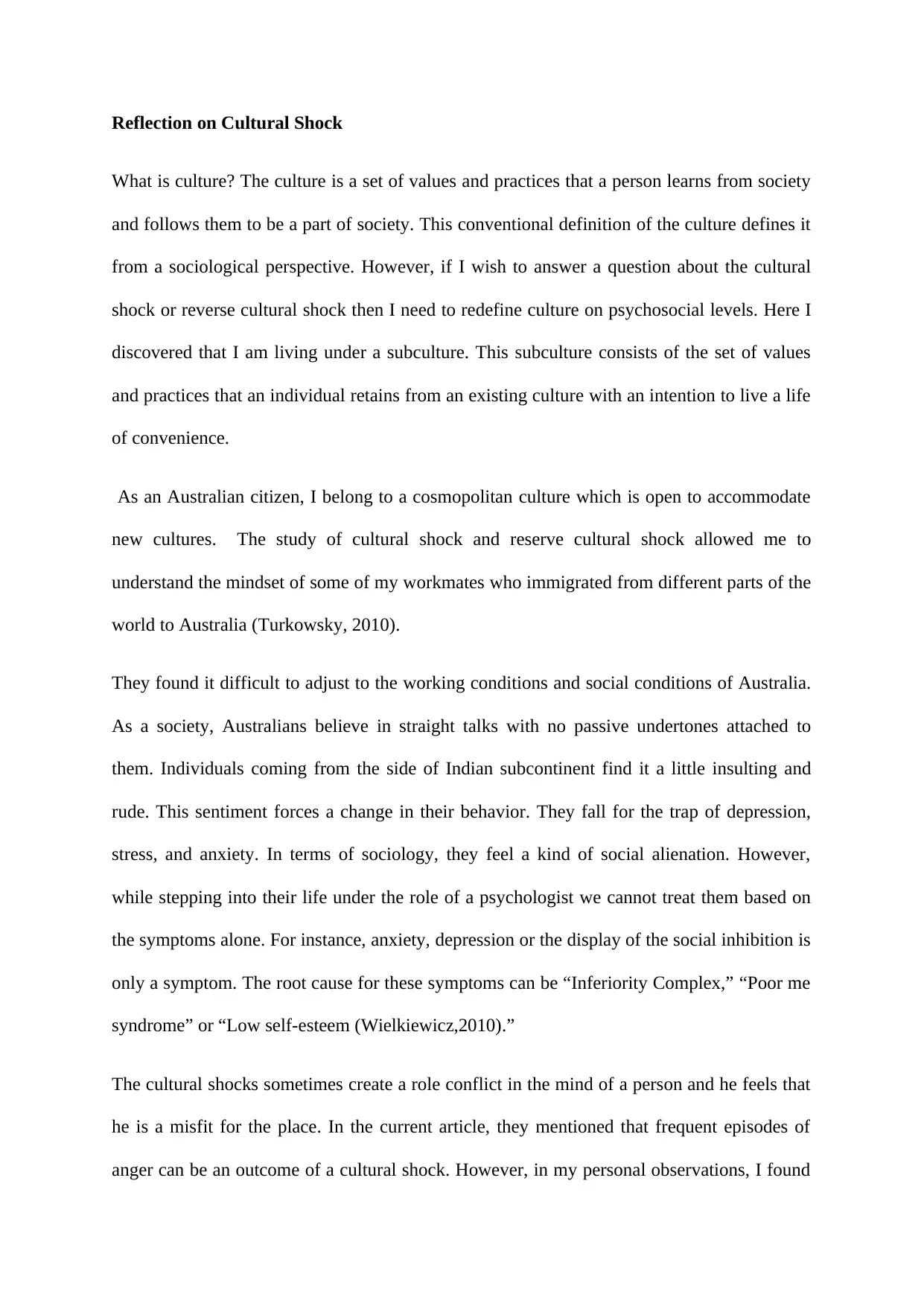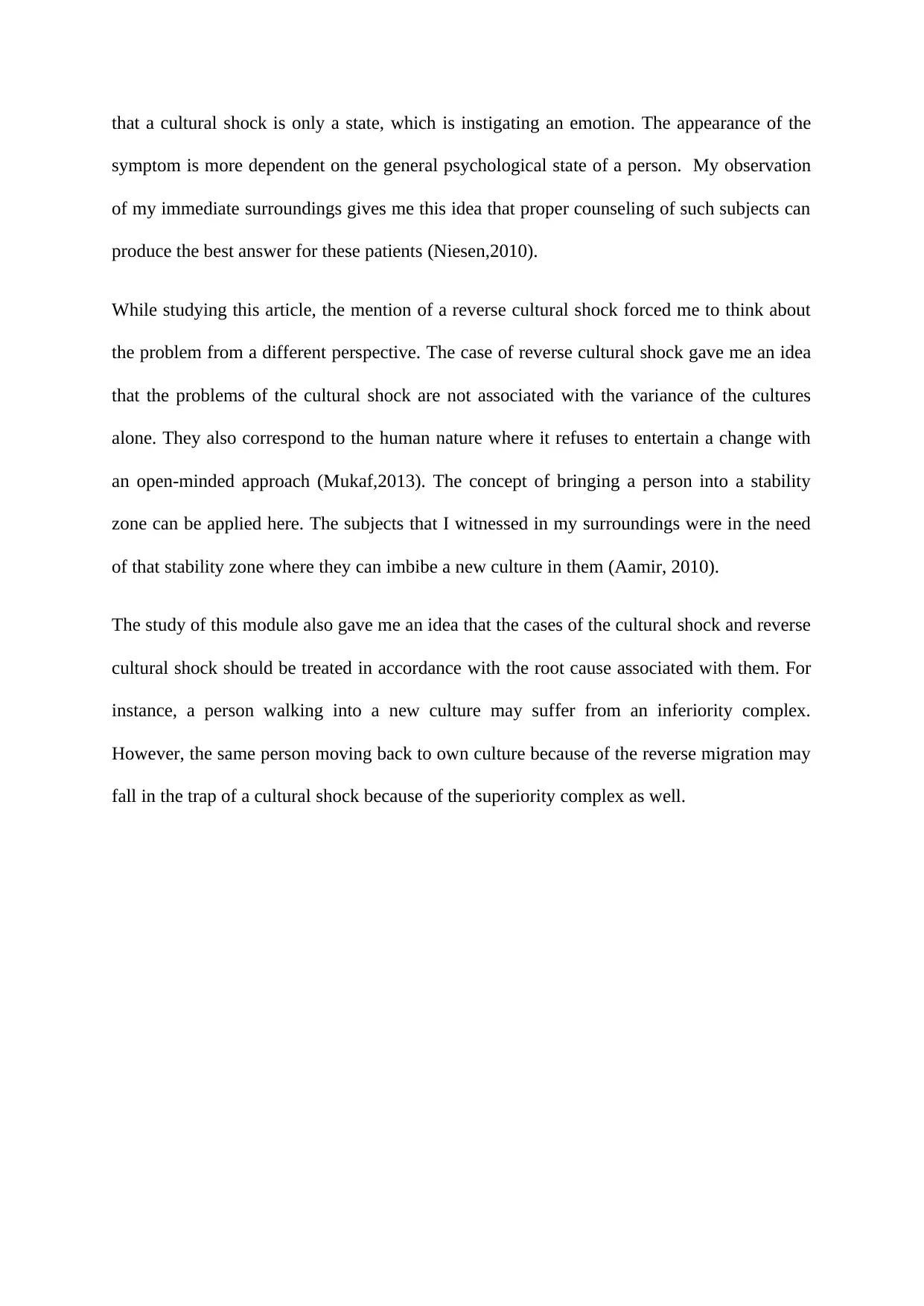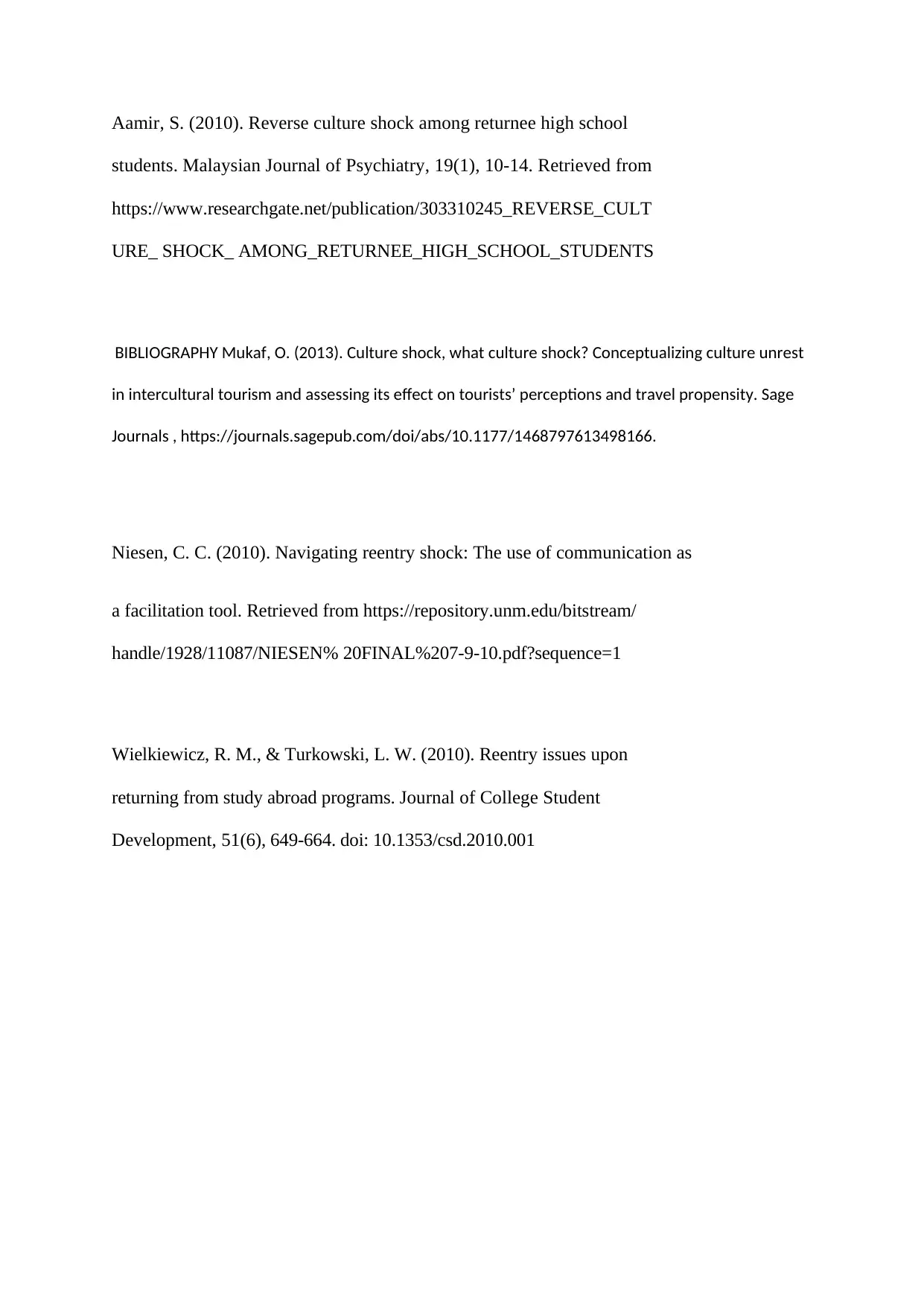Cultural Shock and Reverse Shock: A Reflective Analysis
VerifiedAdded on 2023/01/19
|3
|787
|87
Report
AI Summary
This report delves into the complexities of cultural shock and reverse cultural shock from a psychological perspective, drawing on personal observations and experiences. It redefines culture on a psychosocial level, exploring the challenges faced by immigrants in adjusting to new working and social environments. The report highlights the importance of understanding the root causes of psychological symptoms, such as anxiety and depression, which can stem from inferiority complexes or low self-esteem. It emphasizes the need for proper counseling and a stability zone for individuals undergoing cultural adjustment. Furthermore, the report examines the concept of reverse cultural shock and its connection to human nature's resistance to change. By analyzing these issues, the report aims to provide insights into how cultural shock and reverse cultural shock should be treated, considering the underlying causes and individual psychological states. The report also includes a bibliography of relevant research papers.
1 out of 3








![[object Object]](/_next/static/media/star-bottom.7253800d.svg)